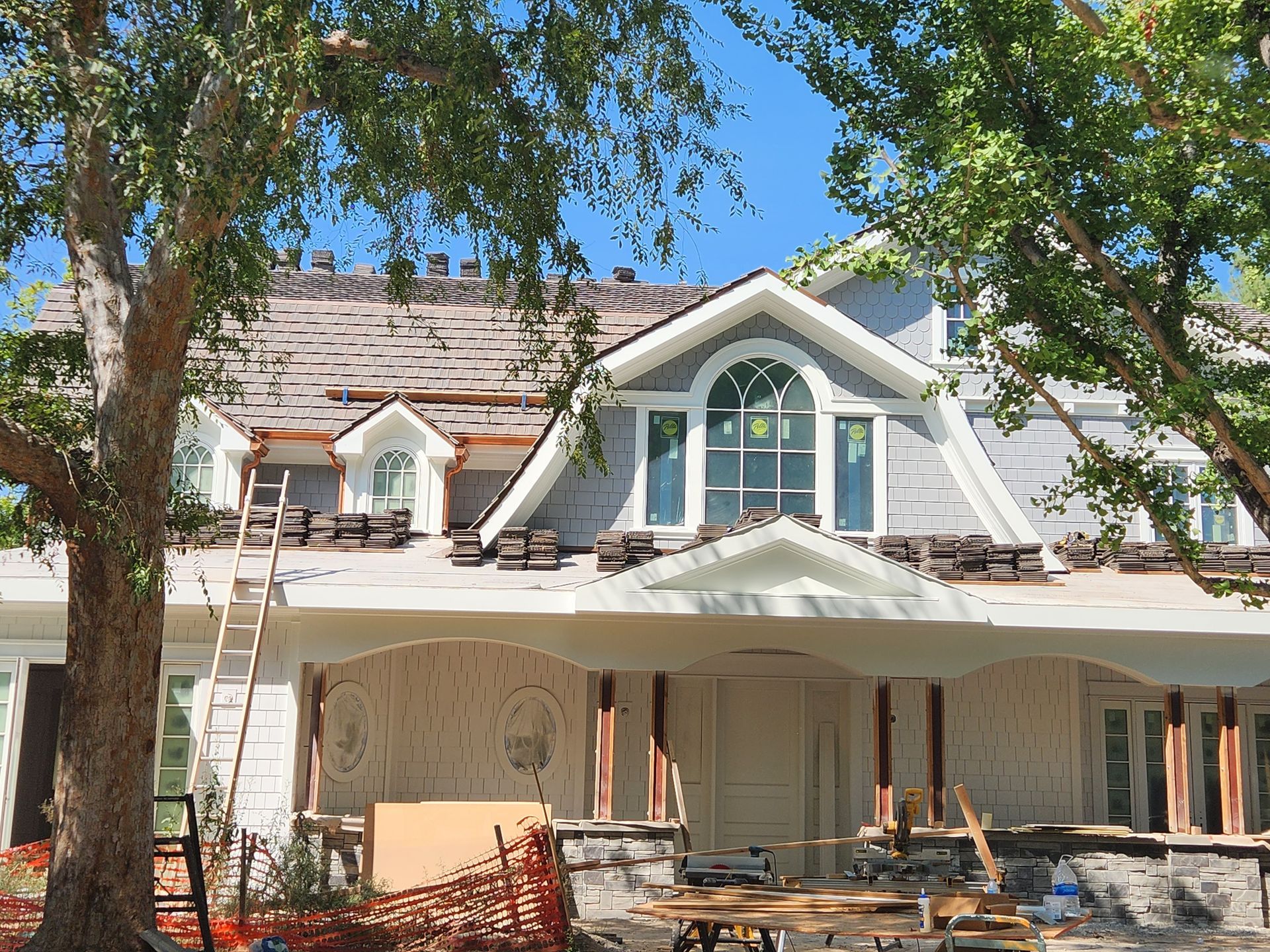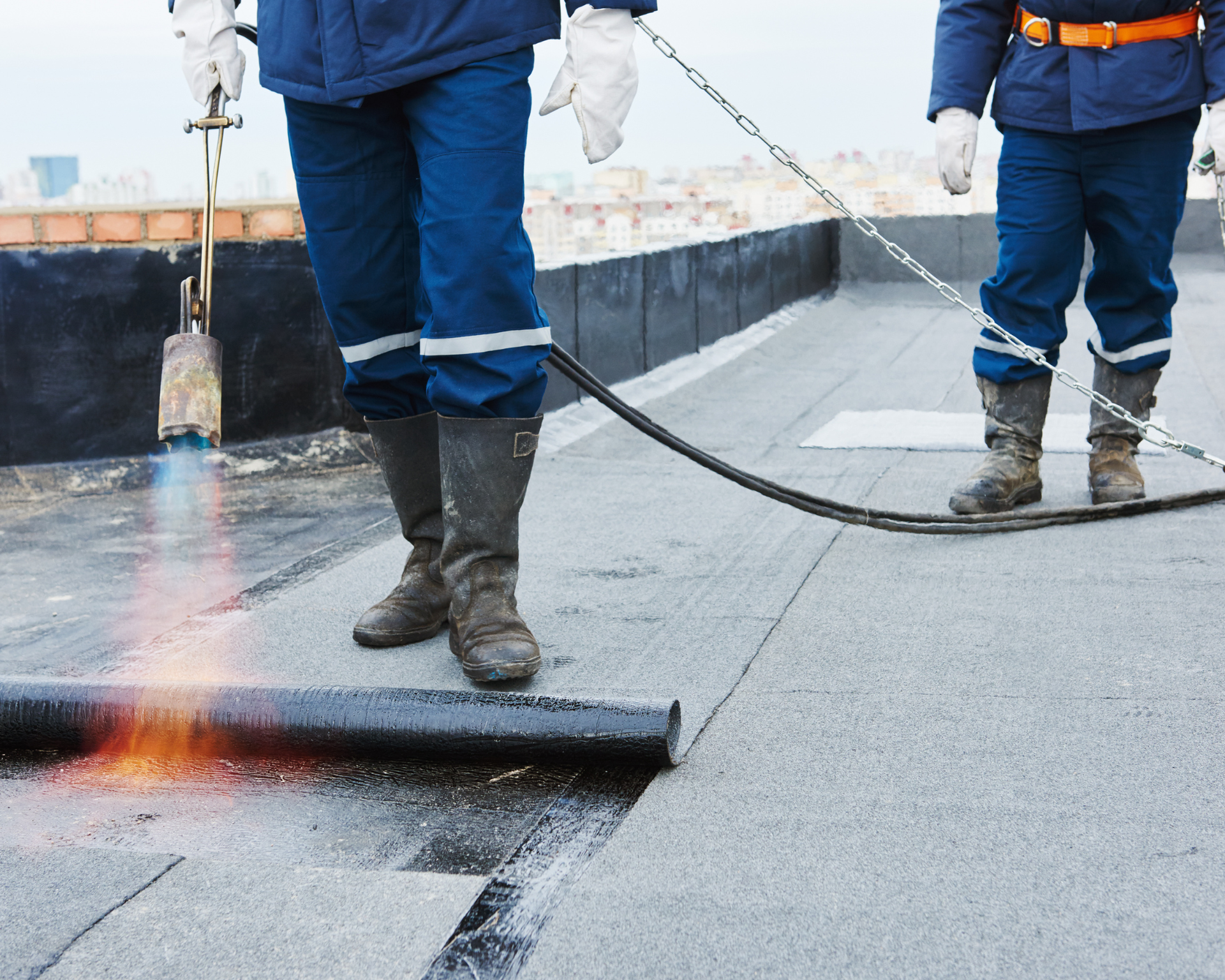Southeast TX Roofing Blog
What Is The Best Residential Roofing Material?
A Comprehensive Guide
When considering a new roof for our homes, navigating the extensive selection of materials can be daunting. With choices ranging from classic asphalt shingles to energy-efficient metal or sleek slate, there is much to explore. The best residential roofing material depends significantly on factors such as climate, budget, and the specific needs of our homes.
Asphalt shingles are popular due to their affordability and relatively easy installation process. Metal roofs, on the other hand, offer durability and energy efficiency, which can result in lower energy bills. For those seeking a luxurious appearance, materials like slate provide a high-end look with long-lasting performance.
It's crucial for us to evaluate the unique conditions of our living situation. Considering the long-term implications of both initial costs and maintenance will help us choose a roofing solution that serves us well over time.
Overview of Residential Roofing Materials
Choosing the right roofing material is essential for durability, aesthetics, and climate suitability. Among the many options available, asphalt shingles, metal roofing, and clay and concrete tiles stand out for their unique benefits and considerations.
Asphalt Shingles
Widely used due to their affordability and ease of installation, asphalt shingles are available in a variety of colors and styles. They offer a decent lifespan of 15 to 30 years. Key advantages: cost-effectiveness, straightforward installation, and a range of aesthetic options. Their weather resistance makes them suitable for diverse climatic conditions. Despite their benefits, they can be prone to damage from extreme weather, such as high winds and rapid temperature changes.
Metal Roofing
Metal roofing provides exceptional durability and longevity, often lasting 40 to 70 years. This type of roofing is resistant to harsh weather conditions and is less prone to maintenance issues. Advantages: energy efficiency, due to its reflective properties that help reduce cooling costs, and recyclability, which benefits the environment. Its higher initial cost can be offset by its long lifespan, though noise during rain or hail is a potential drawback that some may need to consider.
Clay and Concrete Tiles
Clay and concrete tiles are known for their classic appearance and durability, often lasting over 50 years. They work well in hot climates, providing excellent thermal insulation. Strengths: fire resistance, low environmental impact since they are made from natural materials, and their ability to handle salty air, making them ideal for coastal areas. One consideration is their weight, requiring additional structural support during installation. They also come at a higher cost compared to asphalt shingles.
Comparing Roofing Material Longevity
Understanding the longevity of various roofing materials helps homeowners make informed decisions. We examine the expected lifespan of different materials, how climate impacts durability, and necessary maintenance.
Expected Lifespan by Material
Roofing materials vary significantly in lifespan. Asphalt shingles, popular for their cost-effectiveness, last around 20 to 30 years. Metal roofing offers greater longevity, often exceeding 50 years with proper care. For even longer-lasting options, slate and tile roofs provide durability upwards of 100 years. Most wood shingles and shakes last 25 to 40 years if maintained properly.
Concrete and clay tiles, while heavier and requiring a strong structural base, can also last more than 50 years. Understanding these ranges allows us to anticipate the long-term benefits and replacements.
Impact of Climate on Durability
Climate plays a crucial role in roofing durability. Metal roofs tend to resist snow and ice but may suffer from hail damage. In humid or rainy areas, slate and tile roof materials excel due to their resistance to water damage. Regions prone to strong winds or hurricanes often benefit from the durability of metal and clay tiles.
Asphalt shingles may face accelerated aging in intense heat, while wood shingles can decay without proper treatment in damp conditions. Choosing the right material for specific climate challenges enhances longevity and functionality.
Maintenance Requirements
Proper maintenance impacts roof longevity significantly. Asphalt shingles need regular inspections for curling or missing pieces. Metal roofing requires checking for rust or corrosion, especially in coastal areas. Slate and tile roofs necessitate periodic cleaning and inspections to ensure tiles remain intact and free from moss.
Wood shingles require treatments for mold and insect resistance every few years. Concrete and clay tiles might demand attention towards chipped edges. Regular maintenance boosts the lifespan of all these materials, safeguarding our investment and preserving our home’s protection.
Energy Efficiency and Environmental Impact
Selecting the appropriate roofing material can significantly influence energy savings and the environment. With reflective properties, superior insulation, and eco-friendly materials, we can enhance energy efficiency and reduce the ecological footprint of our homes.
Reflective Properties
Reflective roofing materials help in reducing heat absorption by reflecting sunlight. Cool roofs are a prime example, employing light colors and special coatings to minimize heat retention.
Using reflective materials can lead to lower indoor temperatures, reducing our reliance on air conditioning. This not only saves energy but also lowers electricity bills. Standard roofs can reach temperatures of up to 150°F, while cool roofs remain around 50°F cooler under the same conditions.
Insulation Capabilities
The insulation capabilities of roofing materials play a vital role in maintaining temperature inside our homes. Good insulation helps retain heat during winter and keep interiors cool in summer.
Asphalt shingles, when combined with proper underlayment, can provide strong insulation properties. Metal roofs, on the other hand, can be designed with insulating air space, improving their thermal performance. Effective insulation leads to energy savings and increased comfort.
Eco-Friendly Roofing Options
Eco-friendly roofing materials reduce environmental impact by utilizing sustainable resources. Recycled shingles made from waste materials like plastic and rubber provide durability while decreasing landfill waste.
Living roofs, or green roofs, incorporate plants to improve air quality, manage stormwater, and create habitat for wildlife. Solar tiles can also generate renewable energy, offering a green roofing alternative. Selecting eco-friendly roofing is a responsible choice, aiding in the preservation of our planet.
Cost Considerations for Homeowners
When evaluating residential roofing materials, it's crucial for us to consider both initial expenses and ongoing costs. This allows us to choose a solution that balances affordability with durability and performance over time.
Upfront Installation Costs
The initial cost of roofing materials can vary significantly. Asphalt shingles, often seen as the most budget-friendly option, typically range from $100 to $200 per square (100 square feet), providing an economical choice. Metal roofing, while more expensive, can cost between $200 and $600 per square, depending on the specific type.
These upfront costs are shaped by several factors, such as the home’s size and layout complexity. Labor charges can be considerable, especially for more intricate installations. It’s imperative to account for these installation costs when budgeting for a new roof.
Long-Term Value
When assessing long-term value, we must consider the lifespan and maintenance needs of various roofing options. Asphalt shingles generally last 20-30 years with moderate maintenance needs. Metal roofing can last 40-70 years, providing greater longevity but typically requiring less frequent maintenance.
In our view, investing in longer-lasting materials can lead to savings over time, especially when factoring in reduced repair or replacement costs. Energy efficiency can also affect utility bills. Metal roofs, for example, can reflect solar heat, potentially resulting in lower cooling expenses during warmer months.
Cost vs. Performance
Performance in relation to cost is a crucial consideration. While more affordable options like asphalt shingles offer acceptable durability and weather resistance, premium materials such as slate or tile offer superior durability and aesthetic appeal. Slate can withstand various weather conditions with minimal degradation and often lasts over a century.
While these premium options come with higher upfront costs, their performance in extreme weather and their minimal maintenance can justify the expense. It's important for us to weigh these factors carefully to select the roofing material that best meets both our immediate budget constraints and long-term architectural and performance goals.
Aesthetic and Architectural Compatibility
When selecting a roofing material, two crucial considerations are style and harmony with your home's design. Material styles and colors affect the overall look, while suitability for home designs ensures alignment with architectural aesthetics.
Material Styles and Colors
Roofing materials vary in texture, shape, and hue, impacting a home's curb appeal. Options like clay tiles, asphalt shingles, and metal offer a range of choices. Asphalt shingles come in diverse colors, making them adaptable to various styles.
Clay tiles present a traditional look with earthy tones, while metal materials might have a sleek, modern finish.
We should assess siding colors and landscaping to find a roofing style that complements them. The harmony between these elements enhances the property's architectural vision. Prioritizing the home's existing palette and environment helps in making the most fitting choice, potentially increasing its resale value.
Suitability for Home Designs
Not all roofing materials suit every architectural style. For example, Spanish-style homes often pair well with clay or terracotta tiles. Contemporary homes benefit from the sleek lines of metal roofing, while slate suits historic and colonial homes.
Consider the structural support and roof pitch when choosing materials. Some styles, like slate, require robust structural support, which may not be ideal for all homes.
Additionally, the local climate can impact material suitability. Homes in regions prone to heavy snowfall might find metal roofing advantageous for its snow-shedding properties. Making an informed choice ensures cohesion between the roofing and the house's overall design.
Weather Resistance and Climate Adaptability
Choosing the right roofing material involves understanding its ability to withstand different weather conditions. Important factors are how well a roof performs during extreme weather and its resistance to moisture and UV rays.
Performance in Extreme Weather
Our home's roof must endure various weather conditions, including high winds, heavy snow, and intense storms. Metal roofing often excels in areas prone to hurricanes or strong winds due to its durability and wind resistance.
Meanwhile, asphalt shingles provide effective protection in regions with moderate climates but may not perform as well in blizzard conditions or extreme heat. Clay tiles tend to remain stable in hot temperatures, making them suitable for areas with consistent sunlight. Slate roofing handles heavy weight, ideal for snowy regions.
Resistance to Moisture and UV
Moisture and UV exposure can degrade roofing materials over time. Asphalt shingles are treated for moisture resistance, yet may require maintenance to avoid mold or algae in humid climates. Metal roofs resist moisture well, reducing the risk of rust with proper coatings.
Clay and concrete tiles naturally repel water and resist fading due to UV exposure, making them a strong choice in sun-rich locales. Slate roofs also resist water and UV effectively, thanks to their dense, non-porous structure. Regular inspections and maintenance ensure these materials perform optimally in diverse weather conditions.
Installation and Repair Factors
When considering roofing materials, it's crucial to evaluate both installation and repair aspects. These factors can significantly impact long-term costs and maintenance.
Ease of Installation
The complexity of installation varies with each material. Asphalt shingles, for instance, are relatively easy to install due to their lightweight nature and versatile design. Metal roofing, despite requiring precision, often comes in large panels that simplify the installation process.
In contrast, clay tiles demand more specialized expertise due to their weight and fragility, requiring careful handling. The installation speed and effort directly influence labor costs and potential for delays, making it critical to select materials that align with your project timeline and budget.
Repair Complexity
We must consider how repairable a roofing material is when accidents or wear and tear occur. Asphalt shingles generally offer simple repairs; a damaged shingle can be easily replaced without disturbing the surrounding area. In contrast, fixing metal roofs might require specialized tools and skills, particularly if large sections are involved.
Clay and slate tiles, while durable, may present more challenges. Their brittleness often leads to higher breakage risk, demanding skilled labor for precise replacements. Knowing the repair complexity can help us plan for future maintenance expenses and evaluate the roofing material's practicality for our specific needs.
Safety and Building Codes
When choosing a residential roofing material, it's essential to consider safety ratings and adherence to building codes. These factors ensure not only the protection of the home but also compliance with regulations which can vary by region.
Fire Resistance Ratings
Fire resistance is a significant factor for roofing materials. Various materials offer different ratings, typically classified as Class A, B, or C. Class A provides the best fire resistance, making it suitable for areas with a high risk of wildfires. Asphalt shingles, metal roofs, and clay tiles often meet Class A standards.
It's important that we choose materials with a suitable fire resistance rating for our area. Insurance discounts might be available for homes with roofs that have high fire resistance. Homeowners should consult with local fire departments or insurance providers to make informed choices.
Compliance With Local Regulations
Each region has specific building codes that dictate which materials can be used. These codes consider factors like climate, environmental concerns, and local aesthetics. For example, coastal areas may require materials resistant to saltwater corrosion, whereas areas prone to heavy snowfall might need roofs that can support significant weight.
We must ensure our roofing materials meet these regulatory requirements. Non-compliance can result in fines or the need for costly modifications. It's wise for us to check with local building authorities or consult with roofing professionals who are familiar with local codes before making a decision.
Choosing the Best Option for Your Home
Selecting the right roofing material depends on several factors, including individual preferences and the climate where we live. Balancing these elements ensures that our choice provides both functionality and style.
Personal Needs and Priorities
When choosing a roofing material, our personal needs and preferences play a significant role. Whether we prioritize style, color, or budget, each factor influences our decision. Some of us may seek the longevity of metal roofing or be drawn to the traditional look of shingles.
Evaluate your long-term goals. Durability is crucial if we’re planning to stay long-term, while affordability might take precedence in a temporary residence. Consider environmental impact if sustainability is a priority. Materials such as recycled metal or eco-friendly shingles can support greener choices.
Regional Considerations
The climate and weather patterns of our area significantly influence the suitability of roofing materials. In regions with heavy rainfall or snow, materials like slate or metal, known for their water resistance and strength, are ideal. Conversely, clay and concrete tiles might work best in hot, dry climates, offering excellent heat resistance.
We should also consider local building codes and regulations. These can affect material choices, as some regions may prohibit or require specific types of roofing for safety or environmental reasons. Understanding regional trends can help us make a practical and compliant roofing choice.


